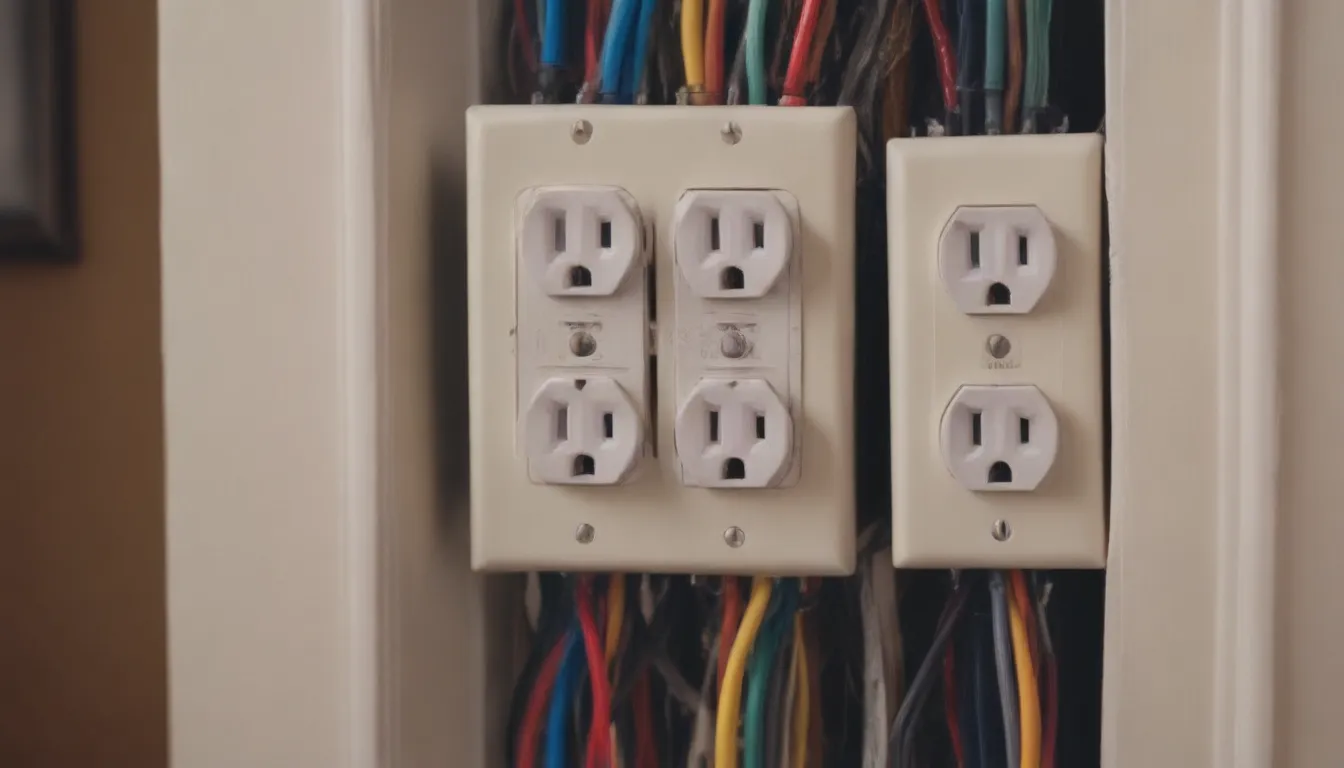Understanding Electrical Code Requirements for Outlets in Your Home

If you’re a homeowner or a DIY enthusiast, understanding electrical code requirements for outlets is crucial for the safety and functionality of your home. The National Electrical Code (NEC) sets the standard for how electrical systems should be installed, including outlet placement and types to use in different areas of your home.
Why Electrical Codes are Important
Electrical codes are not arbitrary rules but are designed to ensure safety and prevent hazards in our homes. By following these guidelines, you can wire your home correctly and reduce the risk of electrical accidents. Let’s dive into the specifics of outlet requirements in different areas of your home.
Outlet Spacing in General Living Areas
In general living areas like living rooms, bedrooms, and hallways, outlets should be placed strategically to ensure convenience and accessibility. According to Article 210.52(A)(1) of the NEC, outlets should be spaced so that no point in a room is more than 6 feet away from an outlet. While this spacing is the minimum requirement, you can choose to place outlets closer together if the space sees heavy use.
- Outlets should not be more than 6 feet away from an electrical appliance.
- In narrow spaces less than 24 inches wide, outlets are not required but can be installed if desired.
- Hallways longer than 10 feet should have at least one outlet, preferably at the midpoint for easy access.
Outlet Spacing in Bathrooms
Bathrooms have specific requirements for outlet placement to ensure safety and convenience. A receptacle should be installed at least 3 feet away from the edge of the sink basin. It is recommended to position the outlet above the countertop and to the side of the sink to avoid water contact. Outlets in bathrooms should be GFCI-protected and connected to a 20-amp circuit for added safety.
- Outlets in bathrooms should be GFCI-protected to prevent shock hazards.
- Installing a GFCI circuit breaker offers the same protection as individual GFCI outlets.
- Outlets should be placed away from water sources to avoid electrical accidents.
Outlet Spacing in Kitchens
Kitchens are high-traffic areas where multiple appliances are used simultaneously. To prevent cord hazards and ensure easy access to power sources, outlets in kitchens should be spaced no more than 48 inches apart. Every countertop longer than 12 inches should have an outlet on the wall behind it, and outlets should not be positioned higher than 20 inches above countertops.
- Outlets should be placed within 48 inches of each other on kitchen countertops.
- Countertops wider than 12 inches should have an outlet on the wall behind them.
- Exceptions to outlet height rules may apply for specific kitchen configurations.
Amperage of Outlet Receptacles
The amperage rating of outlet receptacles should match the circuit they are connected to for safety and proper functionality. Most household circuits provide either 15 or 20 amps of service, and the outlet should not exceed this rating. It is safe to install a 15-amp outlet on a 20-amp circuit, but never install a 20-amp outlet on a 15-amp circuit to avoid overloading.
- Choose outlet receptacles that match the amperage of the circuit for safety.
- Avoid installing higher amperage outlet receptacles on lower amperage circuits.
- Heavy-duty appliances should be connected to outlets designed for higher amperage.
Tamper-Resistant Receptacles
Tamper-resistant outlets are an important safety feature in homes, especially in households with young children. These outlets have a spring-loaded gate that prevents foreign objects from being inserted into the slots, reducing the risk of electrical accidents. While tamper-resistant outlets are usually required in general home areas, there are exceptions to this rule.
- Tamper-resistant outlets are identified by the recessed letters “TR” on the face of the outlet.
- They prevent young children from inserting objects into the outlet slots.
- Exceptions to tamper-resistant outlet requirements may apply in certain circumstances.
GFCI and AFCI Protection
In addition to outlet placement and amperage requirements, GFCI (ground-fault circuit interrupter) and AFCI (arc-fault circuit interrupter) protection are crucial for electrical safety in specific areas of your home. GFCI protection is required in areas prone to moisture, such as bathrooms and kitchens, to prevent shock hazards. AFCI protection is necessary for general living areas to reduce the risk of fire due to minor sparking between wires.
- GFCI protection is required in bathrooms, kitchens, and outdoor outlets.
- AFCI protection is required for all 15-amp and 20-amp receptacles in living spaces.
- Both GFCI and AFCI protection can be provided through special circuit breakers or receptacles.
By understanding and following electrical code requirements for outlets in your home, you can ensure a safe and functional electrical system. Remember to consult your local building permit department for specific code requirements in your area and always prioritize safety in your DIY projects.





